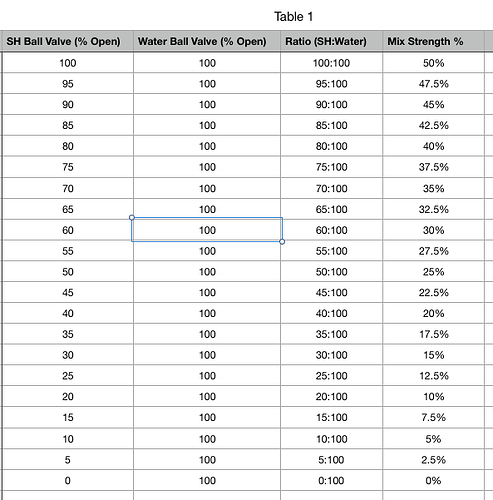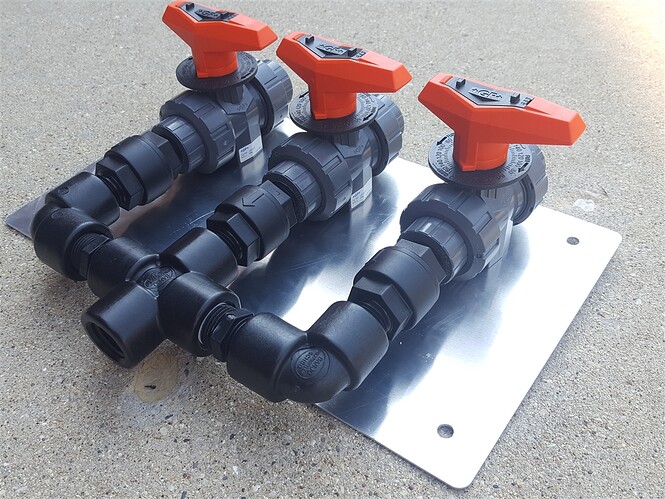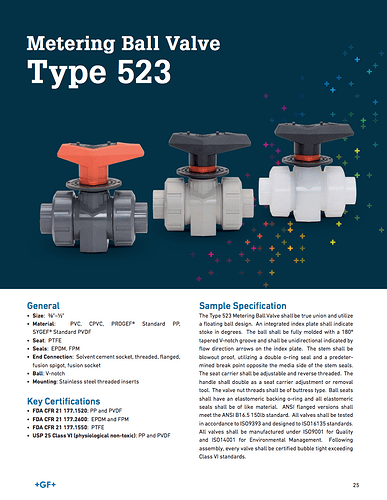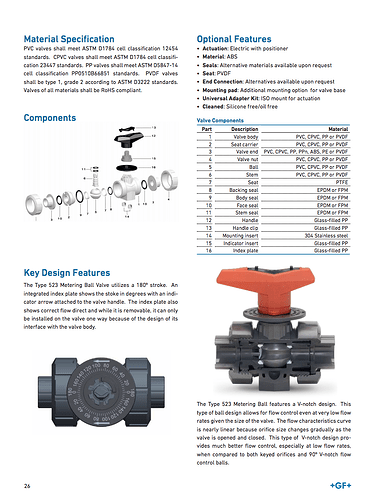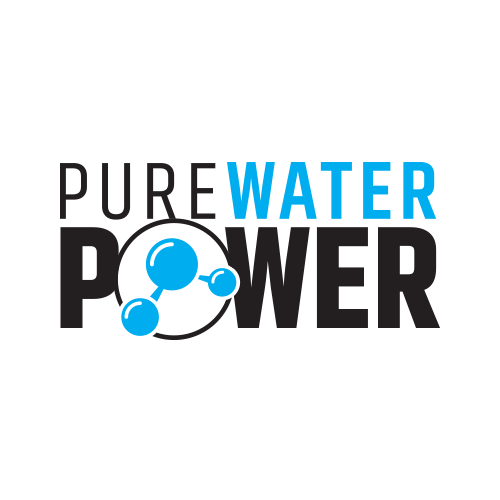Just curious if anyone has made or tried to make their own version of the proportioner/mixer/blender setup before?
I’ve been thinking about building up a trailer when I get one hopefully soon and wanted to add a softwash system. The costs seem pretty high, and with many threads about how to actually do the pump and hose and accumulator and even DIY PVC soft wash wands, I’ve been thinking about doing my own proportioner as well. I do electrical design for water and chemical process systems and my mechanical coworkers work every day with a massive plumbing supplier (Ryan Herco and GF) who bring us donuts and other goodies because we buy from them so much so I think I could probably get access to the right parts pretty easily, and possibly at a hefty discount. The Proportioner is even using GF ball valves lol. We also order heavily from Automation Direct for some parts also, so I think I could get a decent discount on any size poly control box or junction box with hinged lid. They are chemical resistant (we have to use them on our plating lines and chemical process lines), they are fully weather sealed and most are NEMA 12/4X rated (I dont remember all the ratings meanings, but I know they can be permanently mounted outdoors just fine).
I made this little chart for what I believe the mix ratios and percentages would be with a bleach and water ball valve by fully opening the water and adjusting the bleach ball valves to different percentages of “open.” 0% open would be 0 degrees rotation, 50% open is 90 degrees rotation, 100% open is 180 degrees rotation.
Let me know what you guys think or if the ratios don’t look right to you.
I verified against Paul’s video (power wash store) below. He cracks the valve for bleach open to what he calls “around 45 degrees” for a 10% mix. If you look at my chart, "around 45 degrees is about 20-25% open which is between 10-12% mix strength, so I think I’ve got the ratios right.
Adding in the soap mix would be a simple drip essentially, and Paul shows that by hardly even cracking the soap valve open, plus the soap supply hose would be smaller diameter than the bleach and water hoses.
I love the idea of the proportioner, but the price seems outrageous to me for what it actually is in material. Anyway, I may soon start getting some quotes on parts in the next few weeks (maybe months lol) and seeing what I’d end up at doing it myself.
I appreciate any feedback!
Someone is even selling this for $500. I really have a hard time believing it’s worth that much versus doing it yourself.
https://www.softwashmeteringkit.com/Softwash-Metering-Kit-Proportioner-p/full-kit.htm
Go for it. I love my Proportioner, but it is a big premium to pay for a SS box. Those valves are less than $35 @ I believe. I also think that with a 12v the 1/2" intake restricts flow even though it has a 3/4" outflow going to my 1/2" hose on reel. The reason I say that is with my normal roof cleaning settings I get about 5’ less distance than when I’m flushing the SH valve and have both it and water 100% open. On my older systems, always had, much like a pressure washer, larger intake hoses, either 5/8" or 3/4" and it worked great and got good distance.
I’ve seen several posts on Facebook discussing building a proportioner. Several have built their own, and say they work fine. Some say they would rather buy one at a premium, to save the hassle of building one, and to know it was already tested to work and calibrated correctly. One guy said he made his own, but then ended up buying more.
The GF valves in the picture you posted, which i think are the ones used in the pre-built proportioner, are about $100 apiece, so if you use those, which i think most people do, it can easily put the price near $500 all together, with the check valves and plumbing. I have seen people talk about making one with cheaper metering valves… chlorinating valves, i think they are called, and those are around $40. Not sure what the trade-off is… maybe they dont hold up to the chemical as well as the GF valves or something.
Sorry, I don’t have a facebook lol.
I’ve been looking into metering valves this morning and it looks like the GF 523 1/2" (what Proportioner uses) is for sure the right way to go. And yes, $100-115 is what I’m seeing retail. However, my mechanical engineer said we get anywhere between 30-60% off GF through our supplier.
This is super interesting! A project to look into down the road. Do look into making a Facebook though. Free advertising and almost everyone is on there!
Hey buddy, how are things going today? You doing ok? Can i get you a sandwich or something?
Have you lost weight? Man, you are looking good! Love that shirt.
Hey how’s your mom doing?
Well if you need anything, just let me know, friend.
![]()
Just got the GF 523 quoted. $64.20 each. That’s around a 45% discount. 
In case anyone is wondering, I just got the full quote to make the proportioner manifold with the 3 metering valves and check valves as pictured above. $254.65. Half the price. I think I can cut some cost out of it by ditching the rigid sch 80 fittings downstream of the check valves and use poly braid hose and a 4 way “y” fitting instead of a cross. If @Racer is right in saying that 90’s are bad, this would eliminate all 90’s from the proportioner setup and supposedly allow much less restricted flow.
If I ordered parts and built one of these, would anyone be interested in purchasing it off of me? I don’t have a soft wash system yet and not sure when I’ll get there, so it’s not doing me any good to order these parts super discounted and then keep them around. I’d assemble everything, but it’d be bare bones. No labels or stickers. Just basically the blending manifold as shown above, but probably I’d like to put camlock fittings on the 4 ends. I could leave them empty though and if anyone was interested, you could put in whatever 1/2" fitting you like. There is nothing about this that needs to be in an enclosure or box, so you’d be free to mount it however you want, wherever you want. I believe the valves have mounting holes and could be mounted on any flat surface. I intend on getting check valves that don’t have metal springs or balls inside, so there wouldn’t be any real need to flush the SH like lots of people are doing, as least as far as I can tell.
Just kind of a potential trial run. If anyone is interested, I’d sell the manifold to you at my costs plus whatever the shipping would be. It’d let me learn a bit and be a good deal for someone who doesn’t want to pay $1200 for a full proportioner if you can live without a stainless enclosure and stickers for valve labels. You could always do your own stickers or just remember which valve is which, and use the chart I created above for correlating degrees of valve rotation to percentage of mix strength.
Waiting on quote for an all non metal check valve currently. the $254 is with stainless steel spring check valve, which will corrode over time, but it’s super cheap. Price could go up once I identify the right check valve. So you’d pay what I pay (~50% off retail on parts) plus shipping, no fees or anything for my time or labor. If it works well, it’s something I might consider ordering more of and selling to people for a small profit. Of course, it won’t be as neat and tidy as a $1200 Proportioner, but it will have 100% of the functionality.
If anyone is interested, let me know and we can exchange numbers and figure out some more details or specific fittings since I can get them so cheap through my supplier at my day job.
Thanks!
I’d be interested. If it works and the metering valves will hold up to SH. Sounds like you’re using the same materials just at a really good discount. @FathomPW check it out.
Is your employer ok with you reselling them, even for no profit? If they were, then i might be interested… but if not, i would pass.
You need to make sure final exit is 3/4"
Got the quote with the Plastomatic diaphragm check valve. It has no issues with chemicals and doesn’t need gravity, so it can be used horizontal or upside down, but they are $91 a piece (x3). It more than doubled the cost of parts. I’m working with the supplier to look into other alternatives for check valves that won’t corrode from the SH but don’t cost nearly as much. I won’t know about that until Monday though.
Also we just hired a salesman this week who worked for our plumbing supplier for 10 years as one of their regional salesmen. He and I are meeting up Monday after work to talk about the blend manifold and what the purpose is and see if he approves of the parts I’ve spec’d out and has other ideas for check valves. He seems like a great guy so far so I’m expecting that to be pretty helpful.
Is 1/2" okay for the metering valves and fittings and incoming supply? If I recall correctly, looks like Proportioner is using 1/4" connection for detergent, but same size plumbing after that as the SH and water. Is this correct @Racer?
If 1/2" valves, should the only thing that is 3/4" be the final out port? Everything going into that connection is 1/2", out is 3/4"? So that’d be 3 1/2" fittings to a 3/4" cross, so 3 reducers (3/4" to 1/2") would be required.
Thanks for the advice.
Man that’s great work that you are doing. You guys might come up with a better idea for parts or something. Good stuff!
Bingo! Found a super cheap check valve, doesn’t need gravity. Hastelloy springs available. Here is the check valve, and is very likely what Proportioner is using.
In Paul’s video for the Proportioner, he mentions at the end that they are using Hallestoy springs, but he said it wrong. It’s Hastelloy, a superalloy with great corrosion resistance, including resistance to corrosion by SH.

If you look at the link for the part, it’s only like $10. That’s cheaper than the cheap check valve I was discounted. I’ll give the supplier this part number Monday as well and see what kind of price they could get me the same part for. I’ll run all this by our new salesman too and see what he thinks about the flow rates and inner diameter of the different parts.
You go boy! 
Regarding your earlier question to Racer, he can confirm, but yes the 1/2" valves would work.
What he was saying earlier was that it would be better if you could find 5/8" valves, or even 3/4", so the flow isn’t restricted… but they may not make them that large. Maybe you can check and see?
Im assuming that if 1/2" is the largest the valves can be, then it doesn’t really matter if the rest of the incoming plumbing is larger… just as long as the outgoing is 3/4"… but again, Racer will have to confirm that.
Part of the data sheet for viewing pleasure. Only available in 3/8" and 1/2". I guess when you get above that, maybe you really aren’t trying to be that precise lol. On the second page you can see the 180 degree dial really well. That’s what you’d use to get the mix you want without stickers telling you your mix ratio. I’m sure once you look at the chart for it once or twice though you probably wouldn’t need to any more, maybe just rare occasion.
